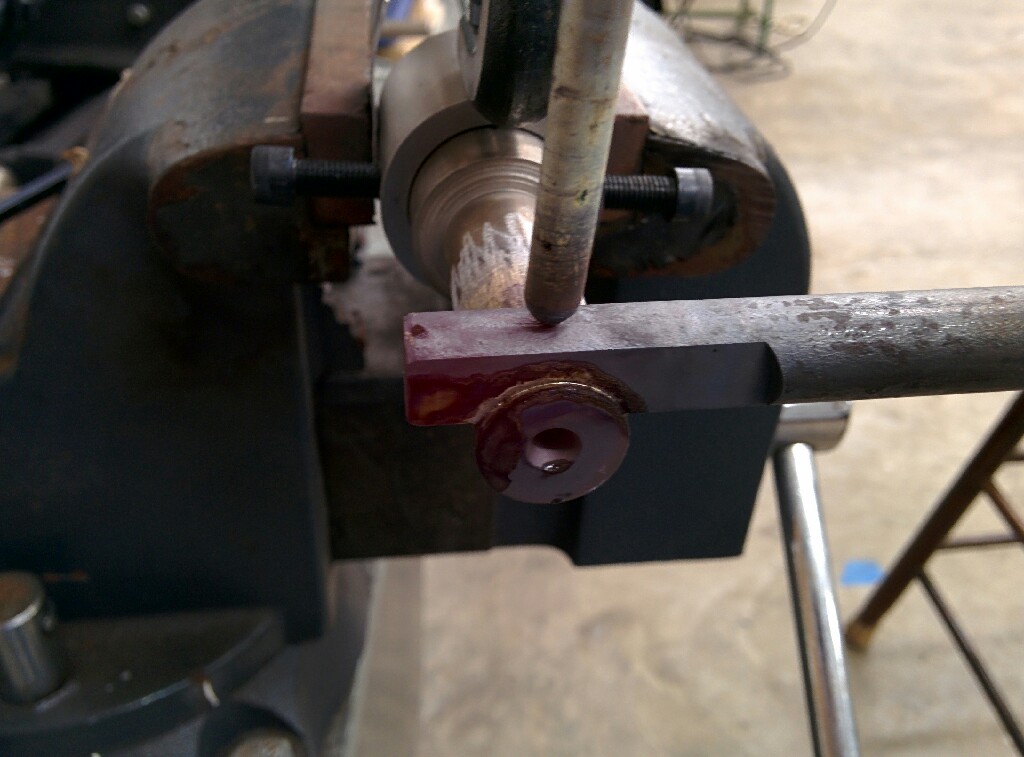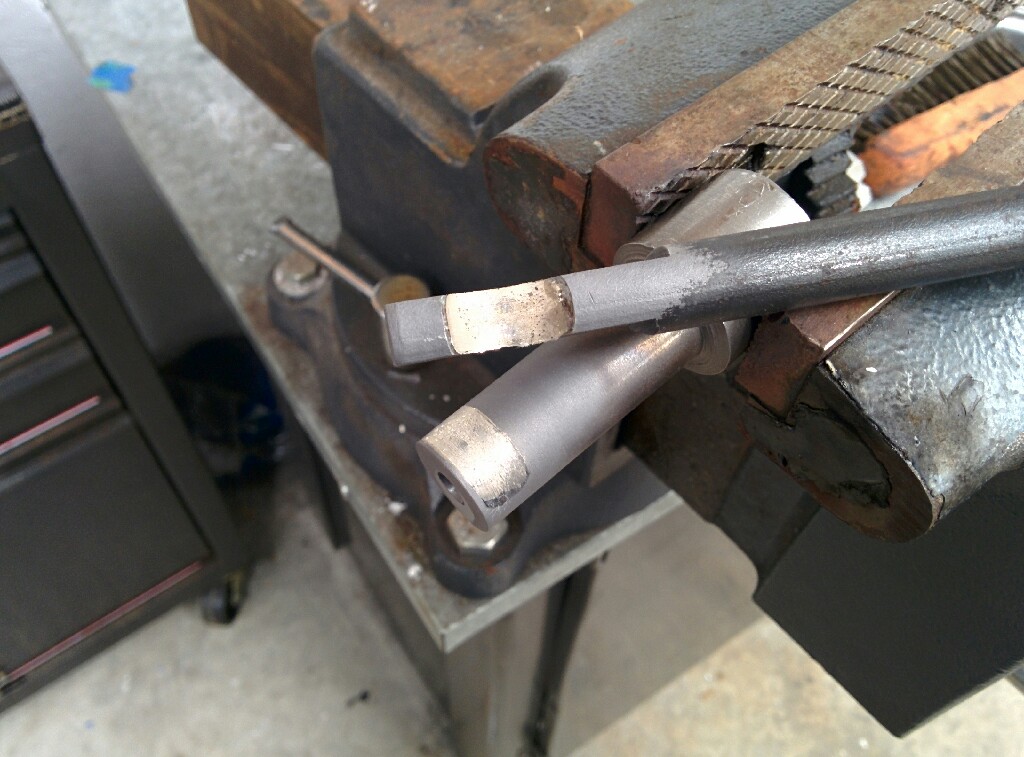I've probably burned up $100 worth of solder practicing to do a bolt handle (Stock R700 bolt with a Kiff handle). I machined out a mock bold body and handle to practice. I've gotten to the point where I get what i think is good flow and good overall contact.
I check my work by whacking the mock handle with a 20 oz. ball peen hammer to break it off. I don't know how strong a properly soldered handle should be. With the mock bolt in a vise, I can yank on it with all my strength and it won't budge. I even whacked it lightly with a wooden mallet (I've seen people at the range clear stuck cases that way before) and it seems pretty secure. The ball peen hammer knocks it right off though and I don't know if this is normal for a solder joint or an indication of poor adhesion or what.
Any insight?
Edit: using Brownells Silvaloy 355 and Brownells flux and a lazy oxy-acetylene flame.
I check my work by whacking the mock handle with a 20 oz. ball peen hammer to break it off. I don't know how strong a properly soldered handle should be. With the mock bolt in a vise, I can yank on it with all my strength and it won't budge. I even whacked it lightly with a wooden mallet (I've seen people at the range clear stuck cases that way before) and it seems pretty secure. The ball peen hammer knocks it right off though and I don't know if this is normal for a solder joint or an indication of poor adhesion or what.
Any insight?
Edit: using Brownells Silvaloy 355 and Brownells flux and a lazy oxy-acetylene flame.
Last edited:


